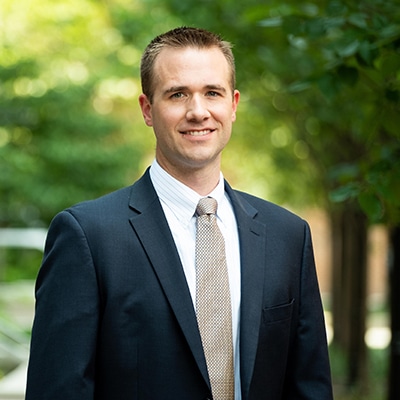GBQ hosted our annual Manufacturing & Distribution Industry Update in October 2022, featuring an array of industry experts who shared relevant insight and leading practices to help empower the growth of manufacturers. In case you missed it, we captured some of the highlights to share:
State of the Global, Regional and Local Supply Chains presented by Jeremy Banta, Assistant Professor – Supply Chain Management, Columbus State Community College
“What is the current state of the supply chain?” From Jeremy’s perspective, the answer lies somewhere between “chaos” and “everything is fine.” Factors impacting the current supply chain include rapid technological advancements, changing global and domestic political climates, environmental issues, social concerns, changes in workforce and availability of workers, as well as continuing aging and degrading infrastructure. Quantitatively, the supply chain has been significantly challenged as the US e-commerce sector experienced 10 years of growth in about a fiscal quarter following COVID-19, and nearly 75% of US consumers tried different stores, websites, or brands during the COVID-19 crisis. Those who are thriving have a few commonalities, including focusing on making the supply chain more socially and environmentally sustainable, proactive business continuity planning, and coordinating better collaboration across functions within the company.
State of the Region presented by Matt McCollister, Senior Vice President of Economic Development, One Columbus and Jay Knox, Director of Client Research, One Columbus
Focusing on changes here in central Ohio, Matt and Jay addressed some major companies investing in the central Ohio region, including, but not limited to, Intel, Walgreens, Amgen, HomeGoods, and Magna. These investments are catapulting the continued growth of the Columbus and central Ohio markets. Recent market data shows that Columbus is a top-performing regional economy and leads the Midwest in population growth, job growth, and GDP growth. Ohio continues to be a strong manufacturing state, leading the nation in glass, rubber and plastics manufacturing, and ranking second in automotive manufacturing. Ohio manufacturers account for 16% of the total output in the state and employ 13% of the workforce in Ohio.
State of the Industry presented by Ryan Augsburger, President, The Ohio Manufacturers’ Association
Ryan’s presentation focused more widely on the state of manufacturing in Ohio and the forward-focused growth investments in the state. Ohio is home to more than 12,000 manufacturing businesses and is the third-largest manufacturing state in terms of jobs and economic output. Manufacturing is directly responsible for more than 662,000 jobs for Ohioans. Through the OMA’s work with the state’s manufacturers, a discussion was held regarding current opportunities and threats to Ohio manufacturers, including economic development and reshoring trends, innovation and electric vehicle investment, ongoing work with legislators incentivizing investment in Ohio, automation and robots, as well as workforce and talent development.
A panel discussion was facilitated by Doug Davidson, GBQ Director of IT Services, and featured:
- Lisa Patt-McDaniel, CEO, Franklin County Workforce Development Board
- Tariq Mohamed, Director of Refugee Social Services, Jewish Family Services
- Brian Lehman, Director of Human Resources, Universal Veneer Group
- Aaron Siekmann, President, The Siekmann Company
The focus of the panel discussion was centered on the question everybody seems to be asking right now, “How do we find and retain talent?” The panelists shared success stories that concentrated on the theme that employers need to look at their workforces differently and adjust their internal functions to accommodate these changes. Brian shared how Universal Veneer Group paired with Tariq to address their workforce needs through expanded hiring of refugees. The panelists discussed this process was truly two-fold: the first is hiring the employees, and the second is changing internal policies and procedures to make the workforce transition as smooth and inclusive as possible. Brian spoke to some of the changes Universal Veneer Group made within their policies in order to accomplish this, including updating signage in multiple languages throughout work areas; the use of interpreters where needed, specifically in training and performance reviews; and providing transportation to and from work for employees to name a few. An extensive discussion was had about reimagining the workforce and partnering with existing organizations to identify talent and set up a successful transition to continue to meet talent needs.
To learn more about the ways GBQ empowers growth of the M&D industry, click here or contact us today.
Article written by:
Carter Harris
Assurance Staff
